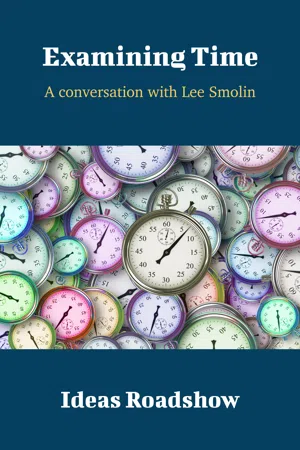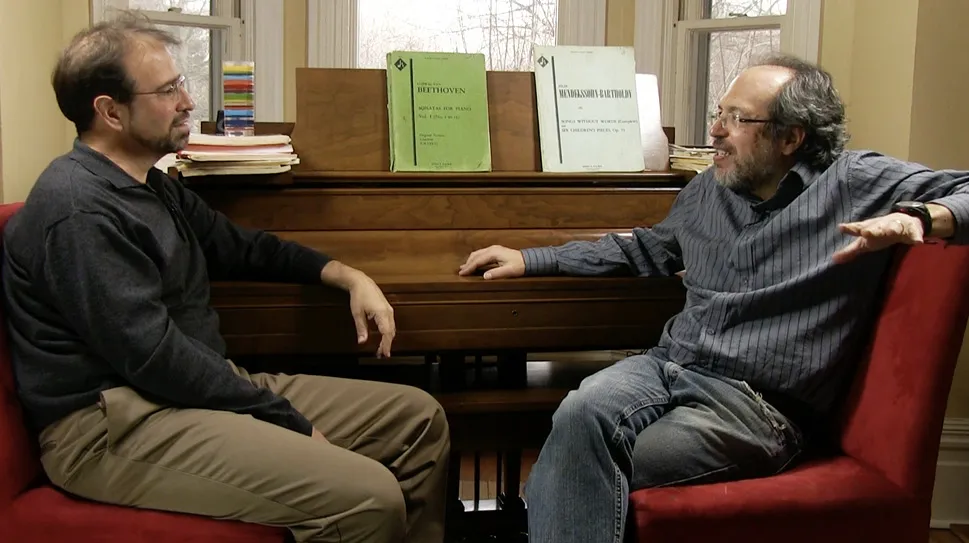![]()
The Conversation
![]()
I. Physics via Architecture
The power of Einstein
HB: Today we’re going to talk about time.
LS: Good.
HB: As it happens, you’ve just written a book about that, Time Reborn, whose main thesis is your conviction that time is real, in particular you say that you believe as strongly in the reality of time as anyone can believe anything in science.
LS: That’s right. There’s nothing that we know or experience which is closer to the heart of nature than the experience of the passage of the present moment and the passage of time.
HB: So right away, I expect, there’s a significant disconnect between what you’re saying and the concerns of the average person. I’m guessing that most people—even most physicists and philosophers, in fact—are not having sleepless nights worried about this sort of thing.
So let’s start at the very beginning: tell me what you mean by that and what, precisely, is exercising you.
LS: Well, one thing I mean is that anything that’s real is real in the present moment, which is one of the succession of moments; anything that is true, is true about the present moment, and only about the present moment.
And I think that most people do not believe that. Most people believe that behind the passage of experience, behind the “veil of experiences” as it’s sometimes called, there’s some true reality which is timeless, which is outside of time.
It’s true that most people will say, “Of course, time is real; I experience time, I’m getting older,” et cetera. But when you ask them what’s really true, most people will talk about mathematics or their religious faith or something like that.
HB: Right. Morality, perhaps—something that is timeless, that’s outside of time.
LS: That’s right. And most physicists will say that among the things that are true outside of time, timelessly, are the laws of nature.
HB: Right. Before we talk about your particular evolution, as it were, of how you came to believe the position you now hold, maybe I should preface this by saying that this is a discussion that you think resonates strongly with everyone—hence your decision to write a popular book on it—but that your particular beliefs and your convictions were arrived at through science.
LS: Yes.
HB: Which is to say that this is not merely a philosophical discussion or idea. I don’t mean to be impugning philosophers or philosophical thinking, what I mean to say is that these ideas that you’ll shortly describe to us are based upon your particular scientific evolution, based upon what you perceive to be important scientific ideas.
LS: Yes.
HB: So with that in mind, maybe now is a good point to have you speak about how those scientific ideas developed and how your views on time changed.
LS: Well, when I was a teenager, I was seduced into the idea that behind the complications and messiness of life and the world as we experience it, there was a more beautiful and truer reality which was capturable in mathematics and mathematical equations.
HB: That’s the standard physics line.
LS: That’s right. And I was seduced into that by a writing of Einstein, his Autobiographical Notes, which I read when I was 17 one spring night on our porch. And I was completely caught by that, because I was going through the typical teenage angst. That idea just grabbed me that, Yes, there is a timeless truth, it all makes sense; there is a beauty behind the world and it’s captured in the laws of nature.
HB: So there wasn’t just an intellectual resonance with the concept, there was also a deeply personal, emotional resonance.
LS: It resonated with me very strongly. It was at that same moment, that same evening, that I decided to do physics as a career, to become a physicist.
HB: Wow, this was all in one night?
LS: That was all in one night, yes. Before that, I’d wanted to be various things: a rock and roll musician or a fiction writer or an architect.
HB: OK, so then what happened?
LS: Well, I was a high school dropout, but I had studied a lot of mathematics. Maybe I should back up a bit. Why was I reading Einstein’s Autobiographical Notes? It was actually because I had wanted to be an architect. I was very wowed by having met Buckminster Fuller.
HB: Why did you drop out of high school if you wanted to be an architect? That’s not the usual route.
LS: Because I was a rebel, and I went to an alternative high school. And at the alternative high school, they said, “We view ourselves as people who will help you find the knowledge you’re looking for out somewhere in the community. So our role is to provide tools for you to go into the community and find the knowledge that you seek.”
And I thought about that for a day, and I decided, The knowledge that I seek is really in the university.
HB: So, See ya.
LS: Yes, exactly, exactly. So I just started attending courses at the university nearby. My mother was a professor of English, so I was able just to drop in and start attending courses. I guess I was an unusual type of dropout, but nonetheless I’d never taken a physics course. I was interested in architecture.
My interest in architecture was started with Buckminster Fuller and his geodesic domes. I had wondered whether you can stretch the domes and make a structure out of any kind of surface that you wanted. And because of that, I had studied differential geometry or tensor calculus. So, I had gotten ahead of myself in mathematics, even though I wasn’t interested in science.
HB: And you said just a moment ago that you had met Buckminster Fuller.
LS: Yes. I had arranged for him to come visit me at the high school, where I was.
HB: This was before you dropped out, presumably.
LS: No, no. That was a different high school. That was two years before. And part of my rebellion in school had been to get very poor grades, so I wasn’t able to go into the college placement courses in math and English and so forth.
And a friend of my parents, who was a mathematician, had arranged for me to go to night school and take the usual high school program in the summer and start calculus. So I was several years ahead of myself in mathematics, just out of a sense of proving them wrong.
At any rate, I was studying differential geometry, and every book that I studied had a chapter in the back about general relativity. So I started to get interested in general relativity, and I went to the public library and got out Einstein’s Autobiographical Notes—it was in a volume of essays called Albert Einstein: Philosopher–Scientist.
So that’s what happened. I read it one night. I was supposed to have a date, but the girl stood me up. I had nothing else to do, so I found this book in my pile and I read it; and I just got the sense, Oh, I want to ...

